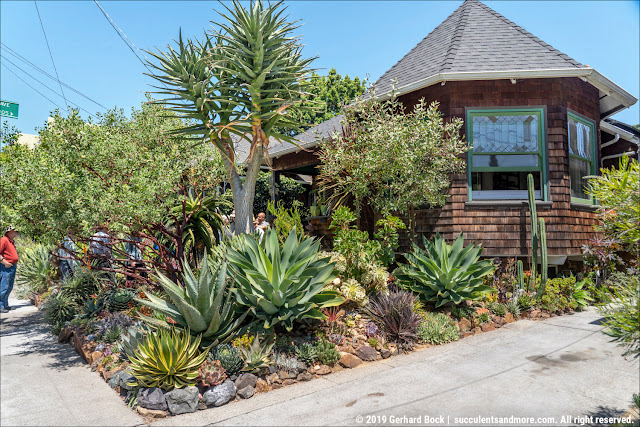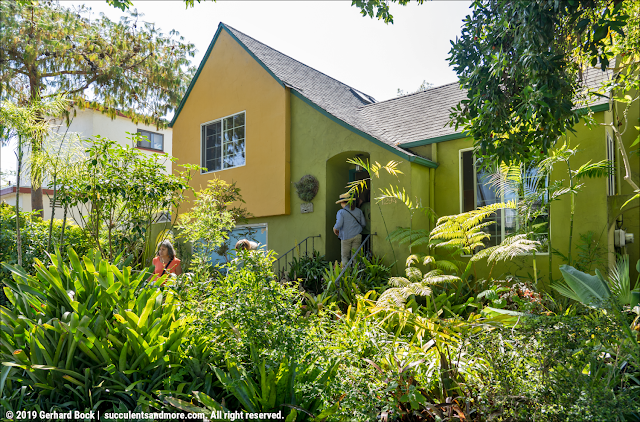Mark R's amazing succulent and bromeliad garden (back)

In part 1 of this post I showed you Mark R's front garden in Oakland: a colorful abundance of succulents and bromeliads in all their glory. The back garden is a seamless continuation, with a few other surprises thrown in—even some tomatoes, as you can see in this photo: The back garden is not a large space, but it comfortably held our group from the San Francisco Bromeliad Society (not everybody made it into these photos). Whenever I'm with a group of like-minded people, I'm torn between wanting to talk shop and looking at the plants. In this case, we were on a schedule so I opted to focus on the plants. I hope I didn't come off as boorish.








